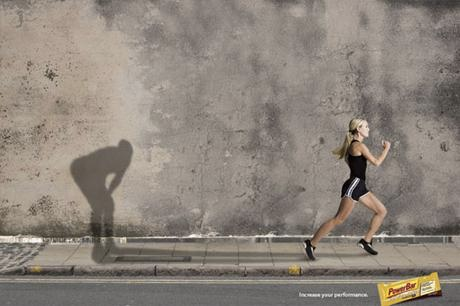The advent of subscription-based stock photography libraries has made it easier than ever to access images and photographs from around the world. You’d think that with more options, there would be more opportunities for brands to be creative. Unfortunately, so much choice can be overwhelming, especially with pictures like this:

Clearly, finding the perfect photo to match your brand is time consuming, so businesses will often play it safe, picking photos that are “close enough.”
The truth is, while you can get away with doing that once or twice, most of the time “close enough” is not going to cut it. The point of visuals is to draw attention to your brand. You would never pour cooking stock in a bowl and call it a finished meal. Why would you do the same with stock photographs?

Here’s how to properly use stock photos regardless of your industry:
B2B
B2B companies are among the biggest culprits of stock image abuse, and for good reason. If you’re trying to represent a service that is complicated, it’s often safer to show an image of people working in a business setting than to attempt to show everything your company does in a single image. Here is an example of what I mean.
While scrolling through LinkedIn, this ad came up in my newsfeed using a stock image.

Do you know what this ad is for? No? That’s a problem. But a few minor adjustments can make this image significantly better.

I am not a graphic design master, but with two triangles and text, we can now tell a small story in one graphic to provide a better idea of what this company does.
Taking this one step further, we could superimpose an illustrated version of this e-publication with the tag “Insights to Impress” and then a reader would have a very clear idea that this ad is for a publication that will provide impressive insights. The image becomes an example of what the reader could become: a knowledgeable leader in their office.
If you go in with the mindset that you will be making adjustments to the photograph, you can create a visual concept and find photographs that contain the elements you’re looking for instead of having to find the perfect photograph that encapsulates everything about your services. In the end, you will get better results and you will have greater control over your company branding instead of being at the mercy of what photographs are available.
B2C
Consumers want to know what they’re buying. Step one should always be getting high-quality photographs taken of your different products. Obtaining these images opens up your options for how you represent your products.
You don’t necessarily need a lot of graphics in order to represent an idea. Some of the best advertisements are the simplest ones. The ad below features a very simple design showing the product with overlaid text. Ads should be to the point clear, as viewers need to be able to digest (no pun intended) information quickly.

But if we want to get more creative visually, stock photos now become an important ingredient.

Via https://hyunhakc.wordpress.com/2010/10/
In this ad, a fairly generic image of a runner is easily transformed into one of endurance and energy. The design is simple, but by using pieces from a couple of stock photographs (a city street, a runner, and a little Photoshop work to make the shadow), there is a story being told. Stock photos can be effective ingredients for a visual marketing campaign, but like any designer will tell you, all ingredients need to be used with care and creativity.
If you don’t have the time to create branded illustrations or do photo shoots for your business, stock photos may be your best option to have some visuals in your content. With small adjustments you can greatly enhance how stock images look and make them a cohesive part of your visual marketing. It won’t have the same impact as a custom image or illustration, but it doesn’t have to be something that people will make fun of either.




